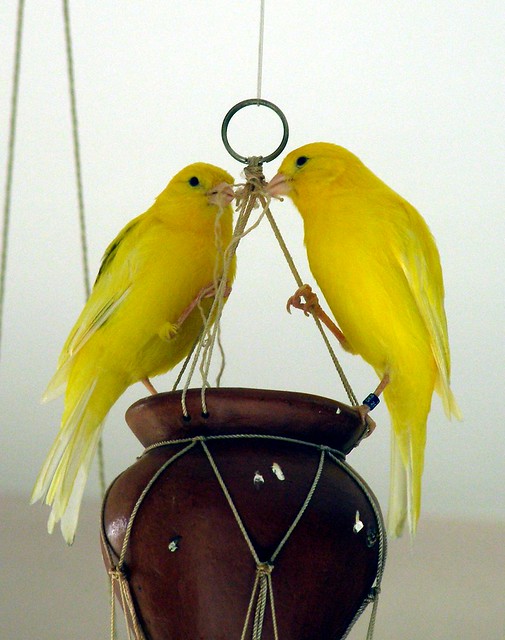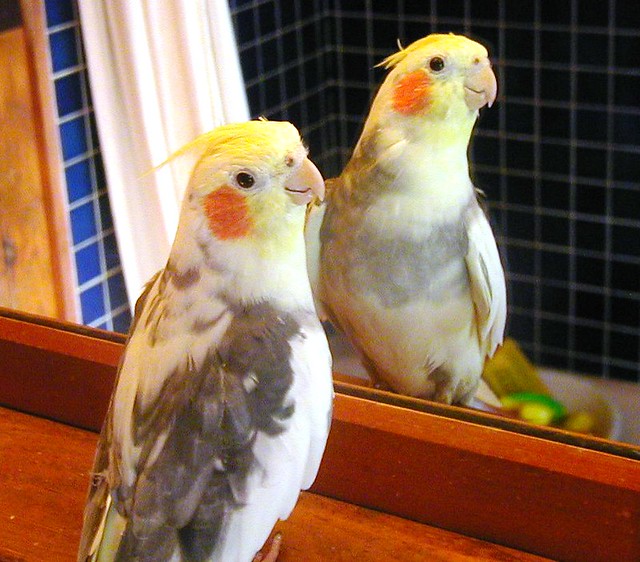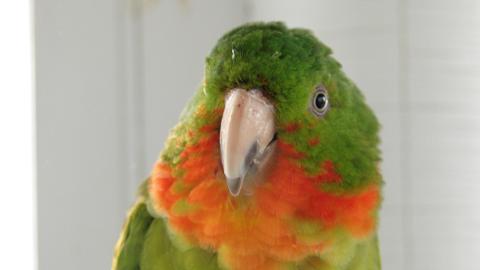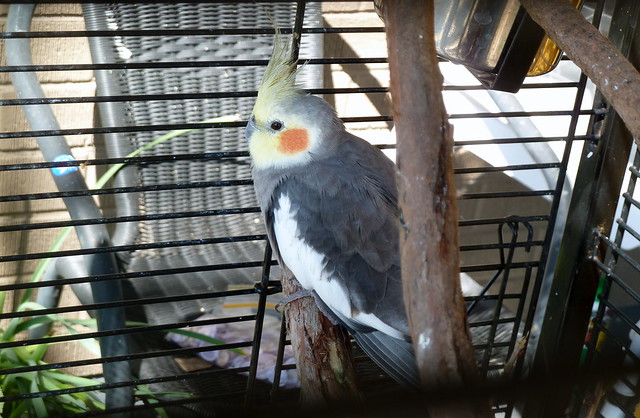(Original Title: Red-Tailed Hawk)
  |
Female Red-tailed Hawk (Buteo jamaicensis) eating a squirrel. (Photo credit: Wikipedia)
|
The
Red-tailed Hawk is the most common hawk in North America. It soars over the open country in search of its
prey or perches in a tree at the edge of a field or meadow. With its sharp eyes peeled, it watches for the slightest movement signaling the presence of prey.
Description
The Red-tailed Hawk is a large bird measuring 18 to 25 inches in length and has a wingspan of 37 to 52 inches. Its back, head, and throat are reddish-brown, and its chest and belly are white with brown streaks. Both the adult and immature birds have a prominent brown belly band that can be seen from a distance.
When perched, the coloration on the wings blends with the back, but when in flight, the pale underside is exposed. The wings have a dark bar at the leading edge and dark tips. Its broad tail is reddish-brown or rust colored on the top and pink below. The legs and feet are yellow.
The Red-tailed Hawk's coloration is variable depending on the subspecies, age, and habitat. The shape and color of the tail and the belly band are the best identification markers to look for in an adult.
Habitat
The Red-tailed Hawk tolerates a wide range of habitats. It can be found in deserts, grasslands, deciduous and coniferous forests as well as tropical rainforests. Its preferred habitat is mixed forests and fields with cliffs or trees that can be used as perches. The Red-tailed Hawk can be found throughout North America except the arctic region.
Mating and Nesting Habits
The Red-tailed Hawk reaches sexual maturity at three years of age. Once he finds a mate, he will stay with her year after year only taking a new mate when the first one dies. The courtship ritual consists of aerial maneuvers with both flying in circles and shrilling loudly. The male will break off and shoot upward only to dive back down again. After climbing and diving several times, the male approaches the female from behind. He grabs her talons and the fight begins.
The pair uses and defends the same nesting area year after year. They build the nest together usually placing at least 12 feet off the ground. It's not uncommon for the Red-tailed Hawk to build its nest on a cliff ledge 35 or more feet in the air.
The nest is huge, sometimes 35 inches in diameter and can be up to 3 feet tall. It is built of twigs and lined with pine needles and other soft plant matter. The nest is kept clean with fresh plant matter throughout the breeding season.
The Red-tailed Hawk competes with several different birds, including the Great Horned Owl for nesting sites. It is not uncommon for one species to destroy the eggs and kill the young in a hostile takeover.
The female starts laying her eggs in April, producing one every other day. The eggs are a bluish-white and the clutch is composed of 1 to 5 eggs. Both the male and the female Red-tailed Hawk incubate the eggs. Once the eggs hatch, the female tends the hatchlings and the male hunts. He provides food for the chicks as well as his mate. After 42 to 46 days, the chicks begin leaving the nest for short flights. For the following 10 weeks, they continue to depend on their parents while they learn to fly and to hunt.
Feeding Habits
The Red-tailed Hawk is carnivorous. Its diet is mainly composed of small mammals such as rabbits and rodents. It will also prey on snakes, lizards, birds, and fish. It is an opportunistic feeder and feed on whatever is available. It usually hunts from an elevated perch. Once its spotted prey, it swoops down and seizes it. It will even snatch a bird right out of the air.
Flight
The Red-tailed Hawk soars rather than continuously flapping its wings. The strokes are deep and slow. During the regular flight they average 20 to 40 mph, but when diving after prey it can reach speeds of close to 120 mph.
Voice
The Red-tailed Hawk's harsh kk-eee-er is often described as a scream.
Conservation Status
Interesting Trivia
o The Red-tailed Hawk displays sexual dimorphism. The female is 25% larger than the male.
o The Red-tailed Hawk is a popular bird in falconry.
o The feathers of the Red-tailed Hawk are considered sacred by some Native American tribes.
o Their eyes are keen. The Red-tailed Hawk can spot a mouse a mile away.
o The Red-tailed Hawk can live up to 20 years in the wild.
















